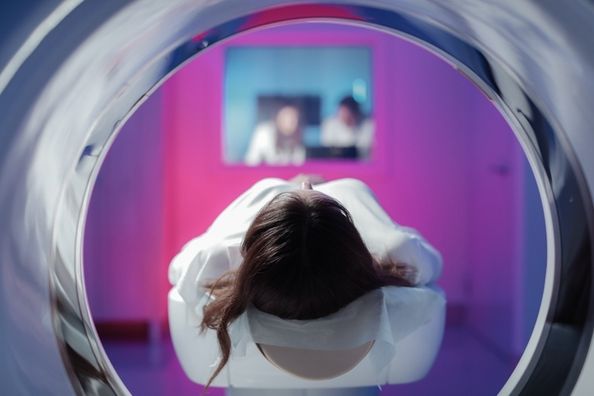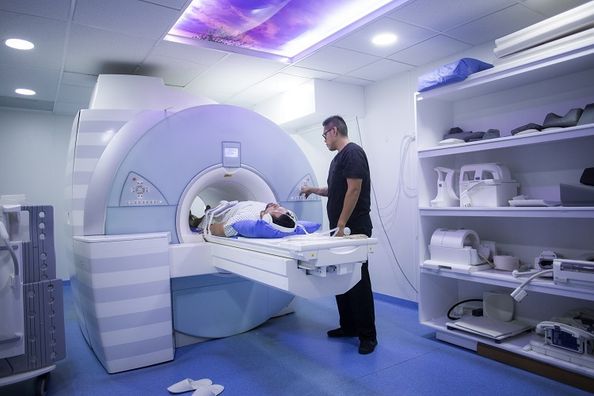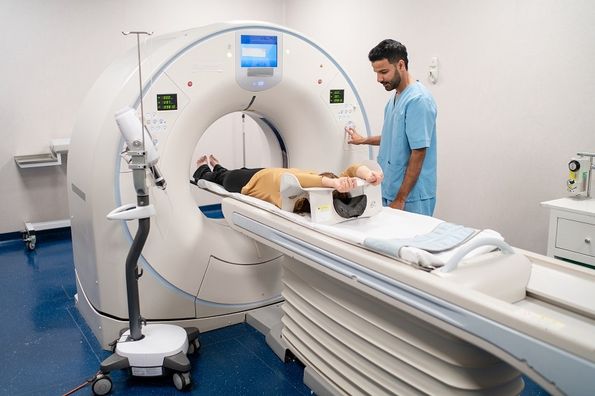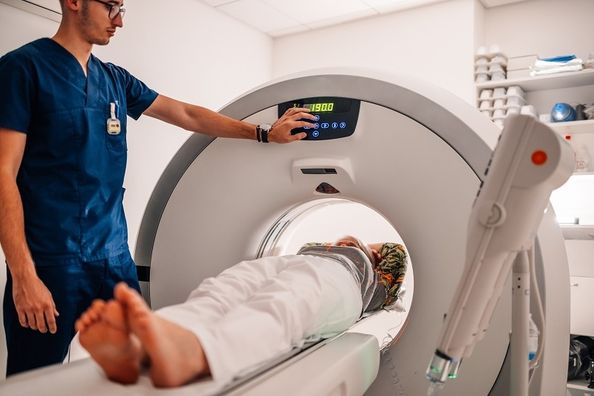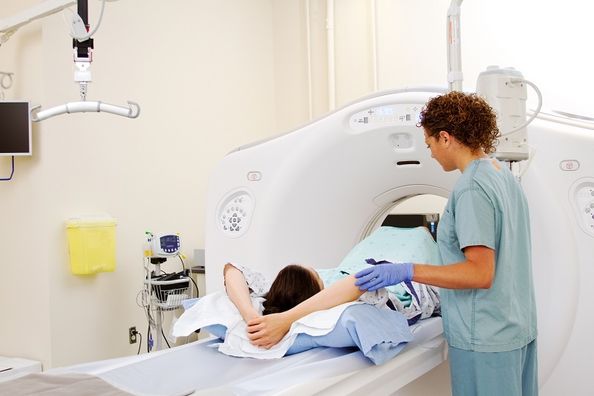Water molecules are the most abundant molecules in the human body, so these are the very molecules the MRI machine uses to create an image. Water molecules consist of oxygen and hydrogen atoms, and the core of a hydrogen atom-its nucleus-is a single proton. Protons have a basic, inherent property called nuclear spin causing them to spin like a gyroscope or a top. Because the protons also have an electrical charge, the spin makes them act like tiny magnets. A magnetic field, which is measured in Tesla (T), will make these spinning protons wobble, like a spinning top that isn’t quite vertical. The stronger the magnetic field, the faster the wobble.
Prior to the 3 Tesla machines, the standard high-field MRI scanner was 1.5 Tesla. A 3T (Tesla) System generates a magnetic field that is twice the strength of 1.5T machine and 10 to 15 times the strength of low-field, or “Open”, MRI scanner. The magnetic field produced by a 3T scanner yields exceptional anatomic detail. The increased image clarity produced by a 3T MRI is particularly beneficial for pathological conditions involving the brain, spine, and small bones such as fingers, hands, feet and toes. It also allows us the ability to do more specialized exams such as those of the prostate and the small bowel.
Many exams can be equally imaged on either a 1.5 Tesla or 3 Tesla scanners. When scheduling your MRI with DMG, you can be assured that our knowledgeable schedulers will schedule your exam on the most diagnostically appropriate scanner, unless your doctor specifies scanner field strength or you have an implant that prohibits you from being scanned on a 3T magnet.
Health Topics:

